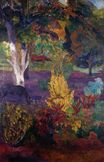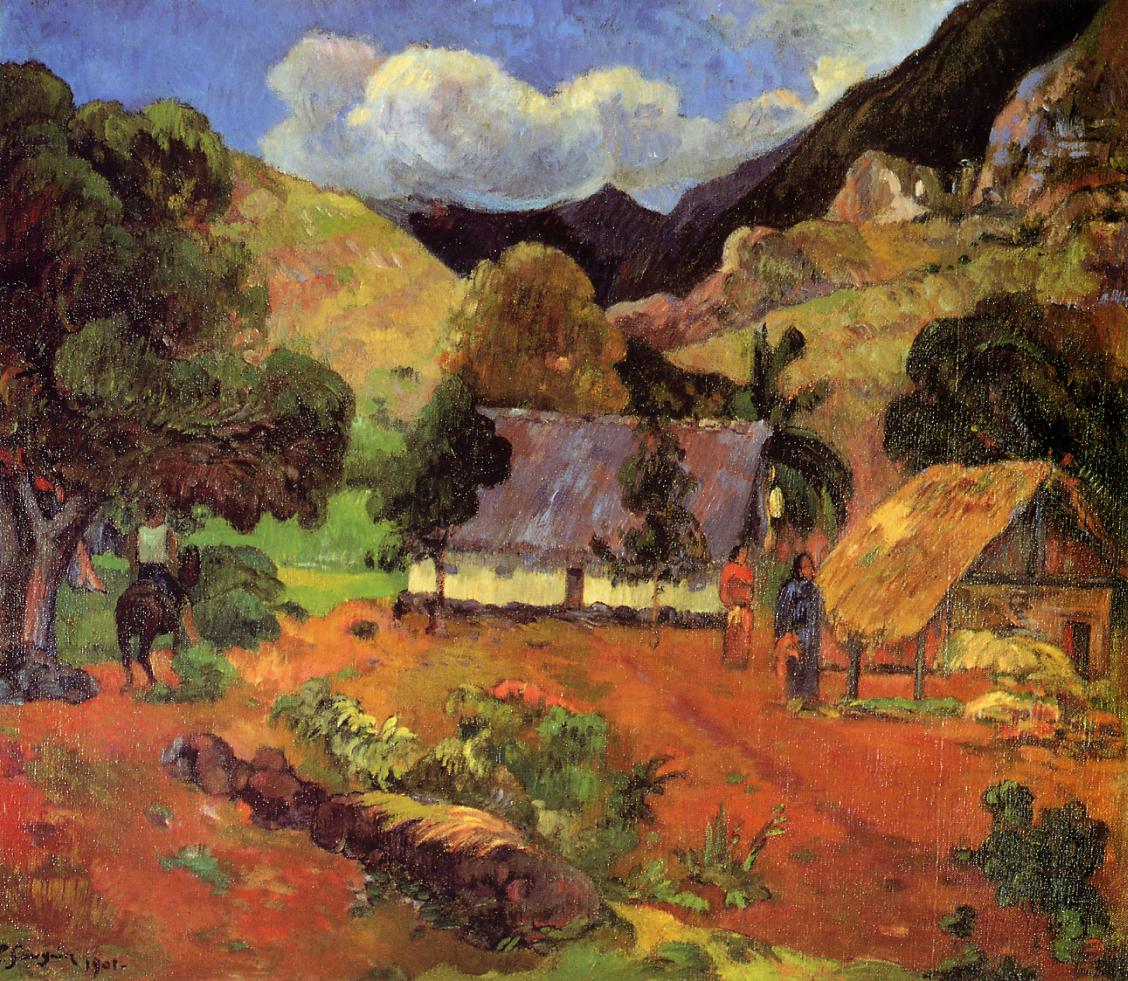Paul Gauguin - Landscape with three figures 1901
 |
 |
 |
 |
 |
 |
 |

Landscape with three figures 1901
67x77cm oil/canvas
Carnegie Museum of Art, Pittsburgh, USA
The image is only being used for informational and educational purposes
<< Previous G a l l e r y Next >>
From Carnegie Museum of Art, Pittsburgh:
Gauguin completed this painting shortly after he moved to the remote village of Atuana on the island of Hiva-Oa in the Marquesas Islands, two years before his death. Gauguin’s move was part of his continuing quest to find increasingly isolated, unspoiled locations and cultures. Despite the remote tropical setting of this landscape, the canvas is reminiscent of the compositional structures seen in Gauguin’s earlier Impressionist depictions of the French countryside. Unlike many works from Gauguin’s years in the South Pacific that tend to be laden with heavy symbolism, this painting is based in the tradition of naturalism and direct observation. The painting depicts Gauguin’s impressions of the village’s inhabitants, small structures, and imposing landscape. The bright, jewel-like colors and the tropical nature of the landscape link the work visually to Gauguin’s later period. The composition shows his awareness of the geometric structure seen in works by Paul Cézanne and decorative patterns and graceful lines seen in the work of his friend Vincent van Gogh. The trees, hillsides, clouds, and sky are decorative and carefully outlined, with each strata stacked on top of another. Gauguin tilted the horizon line and rendered the foreground in a steep slope, making the viewer feel to be hovering above the ground, which drops off abruptly. This has the effect of making the figures in the middle distance near the huts and the figure on horseback appear pinned to the vertical surface of the canvas. The awareness of the physical process of painting, including an emphasis on the canvas and materiality of pigments, are all elements of Post-Impressionism, which helped lead to more radical aspects of modernism in the twentieth century.